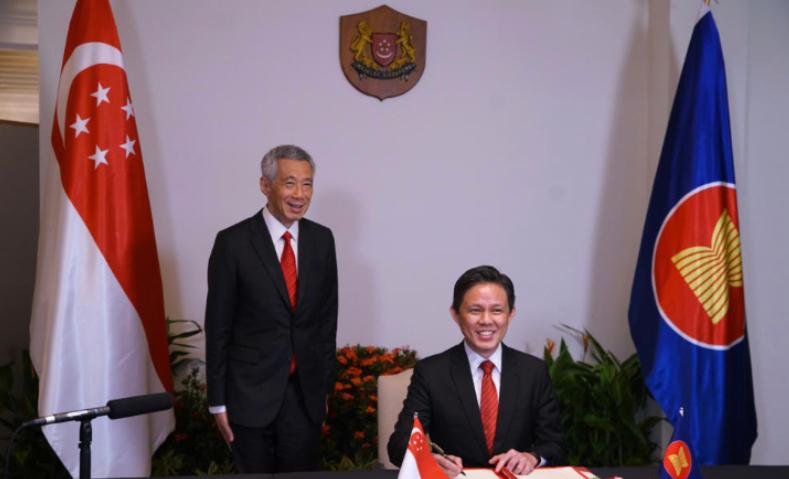After nearly three years of efforts, Singapore’s “hawker culture” was listed by the UNESCO (UNESCO) on the 16th on the representative list of the intangible cultural heritage of mankind. This is the world in which Singapore’s successful inclusion in UNESCO after the botanical garden in 2015 After the cultural heritage list, the second application for heritage was successful.
The food culture of Singapore’s hawker stalls began in the colonial period and has a history of more than 100 years. The grassroots class operated by a small capital greatly promoted the integration of the multi-ethnic food culture in the country through toil and sweat, and jointly created “Singapore on the tip of the tongue”.
According to Singapore’s Straits Times on the 17th, the UNESCO Intergovernmental Committee on Intangible Cultural Heritage held its 15th session on the evening of the 16th and officially announced that Singapore’s “hawker culture” will be included in the World Intangible Cultural Heritage List. The recognition of the United Nations marks Singapore’s first intangible cultural heritage, and the country’s “hawker culture” will share a high reputation with internationally renowned cultural symbols such as Chinese Peking Opera and Indian yoga in the future.
During the online review session, 24 committee members unanimously agreed to Singapore’s application, and the whole review process took only three minutes. However, before that, the National Heritage Bureau of Singapore, the National Environment Agency and the Federation of Commerce and Commerce of Singapore have been working for nearly three years to apply for heritage.
For this honor, Singapore’s Minister of Culture, Community and Youth, Tang Zhenhui, expressed his gratitude to all citizens, especially industry practitioners, calling “hawker culture” the “common glory” of the whole country and promising to defend this cultural heritage.
The Straits Times said that the successful application for heritage means that Singapore has an obligation to protect this cultural phenomenon in the future, and the government will have to submit reports to UNESCO every six years to show the results of the work of cultural heritage.
Singapore President Halima issued a statement saying that “hawker culture” is a feature of Singapore’s food tradition. It not only shapes the identity of Singaporeans, but also contributes to the cultural diversity of the country. For many Singaporeans, the hawker center is a convenient community catering space, allowing people from all walks of life to enjoy affordable multicultural food. Singapore Prime Minister Lee Hsien Loong also expressed his gratitude to several generations of operators in the country, saying that they “satisfy the happiness of the country’s population and enrich the national spirit”.
According to the official website of the National Heritage Administration of Singapore, as early as the 19th century, Singapore hawkers set up roadside stalls on the streets and alleys. At that time, practitioners and customers were often poor people. Because Singapore is a country of immigration, roadside stalls often gather dishes from China, Malaysia, India and even Western countries. These immigrants attract customers with their own “private dishes” and then pass on their family skills from generation to generation and improve, gradually forming Singapore’s unique diversified catering culture.
However, due to the uneven practice of practitioners, the bad operating environment, and the neglect of management by the authorities, the concentration of “roadside stalls” is bound to be accompanied by serious health hazards, and even breeds various forms of violence and criminal activities. With the urbanization of Singapore, the country gradually emerged in the 1950s and 1960s, which gradually appeared as “hawker centers”. The authorities unified the standardized management of stalls in fixed areas, and hawkers took up their posts with certificates.
Today, “hawker culture” has become an integral part of Singaporean life. Lee Hsien Loong called the hawker center a “community restaurant” in 2018, and even the media praised it as the “national canteen”. Street snacks in Singapore are no longer synonymous with cheap food, but the price is still “people-friendly”: generally speaking, you can have a meal at hawker centers for S$3-4.
There are more than 100 hawker centers throughout Singapore. Many Singaporeans are associated with hawker centers a day: a cup of coffee in the morning, a coconut toast, a Hainan chicken rice, miscellaneous rice or fried rice strips in the middle, and a tofu or fish head rice noodles in the evening. In China, if you don’t want to cook, order takeout.
And in Singapore, if you don’t want to cook, go to the hawker center downstairs.
From politicians and rich people to ordinary people, they may be regular customers in hawker centers. In 2014, the media exposed that Lee Hsien Loong appeared in the Hongshan Market Vendor Center, queuing in front of a fried chicken wing booth for 30 minutes.
However, the inheritance of Singapore’s hawker’s food culture has shown a trend of “green and yellow”.
The new generation of young people has difficulty working 10 to 16 hours a day in crowded street restaurants like their parents, and this year’s coronavirus epidemic has hit the industry hard. The Singapore government has also paid special attention to the sustainable development of the industry in recent years.
This year, it launched the “hawker training program” to train interested practitioners in food safety, catering production and business management, and even teach them how to use social media and delivery software. The government has also offered businesses a minimum of S$500 per month rent relief during the coronavirus pandemic. Some people in the industry believe that with the successful application of hawker culture, the industry will certainly “rejuvenate”.



